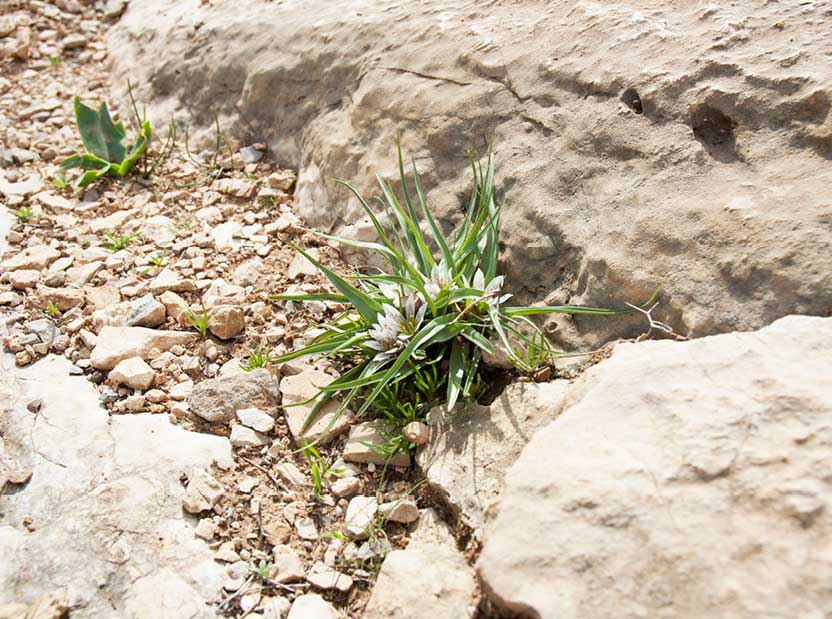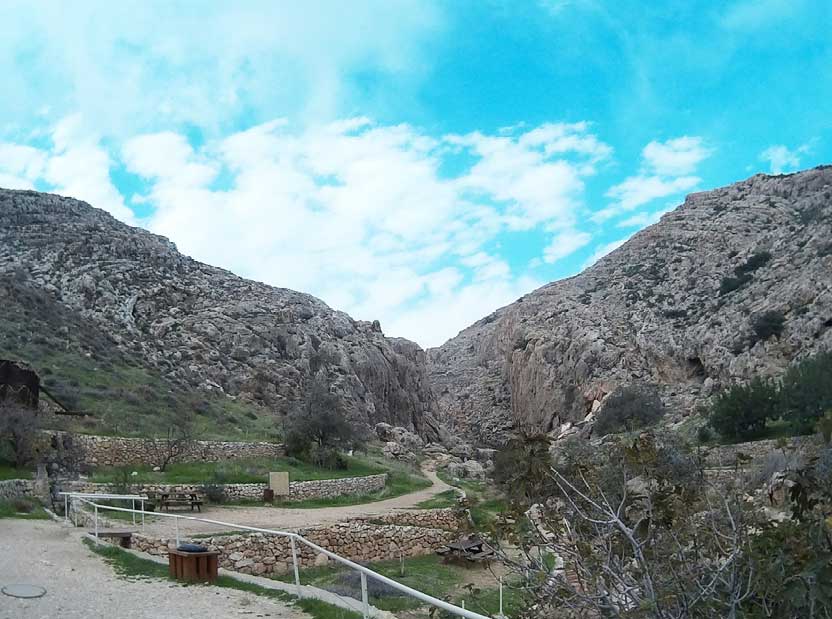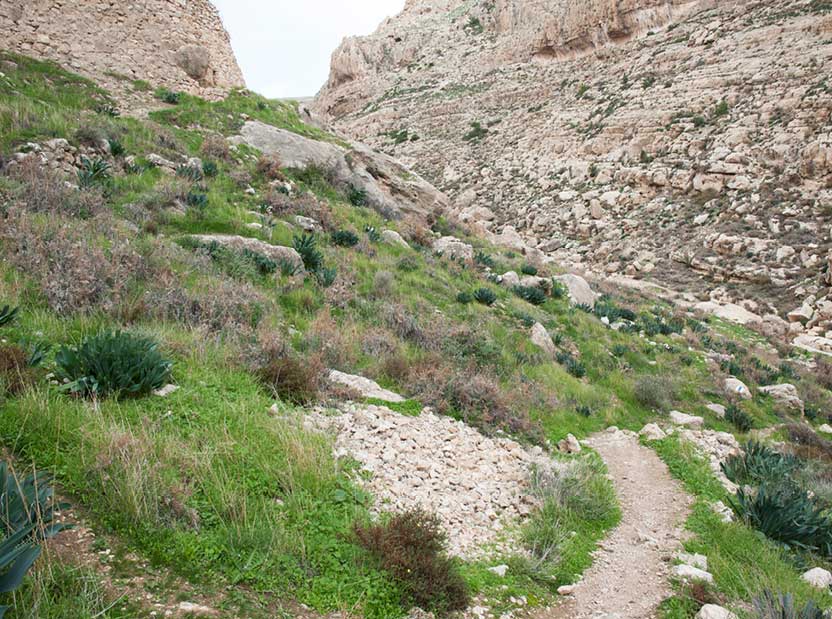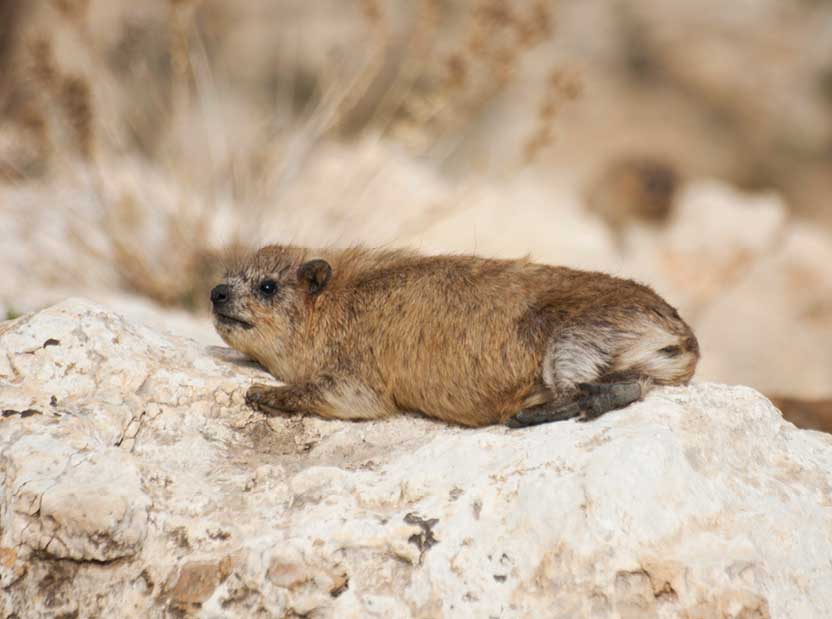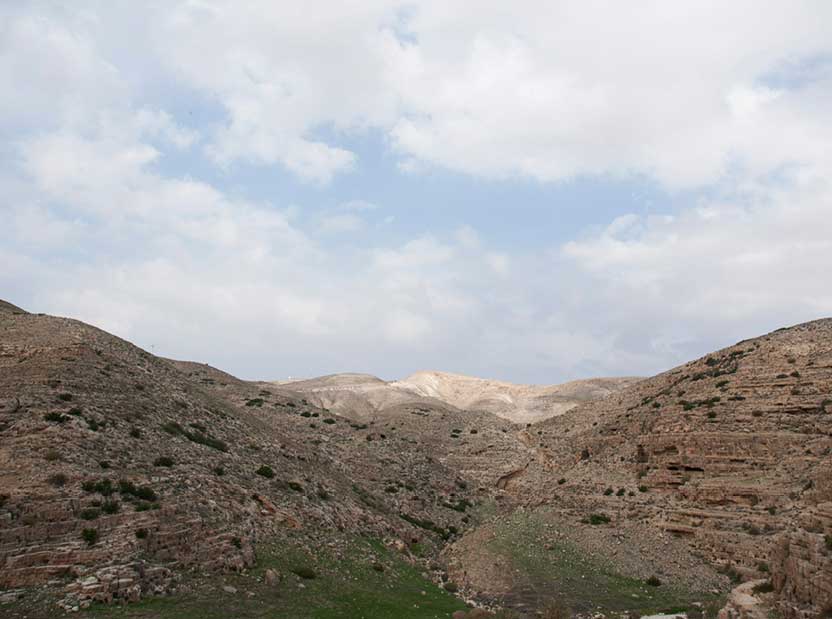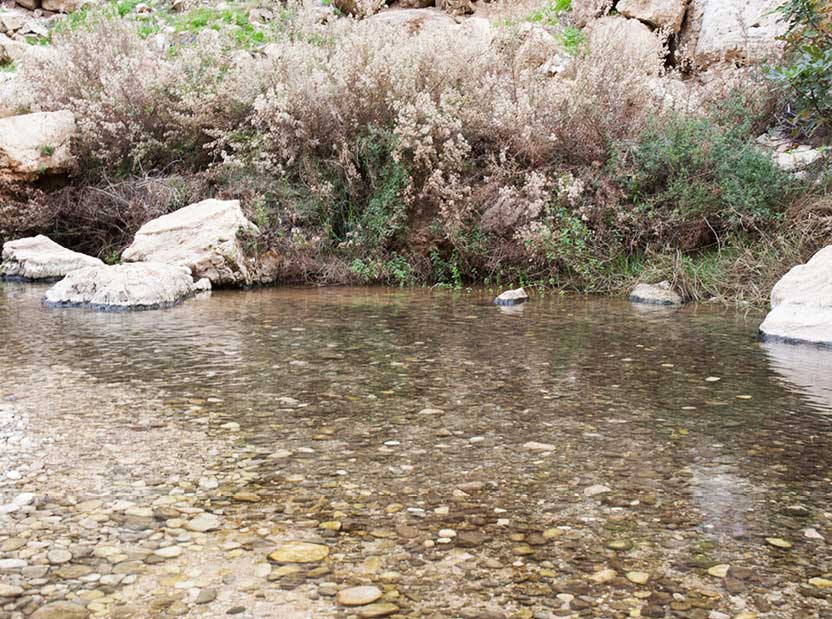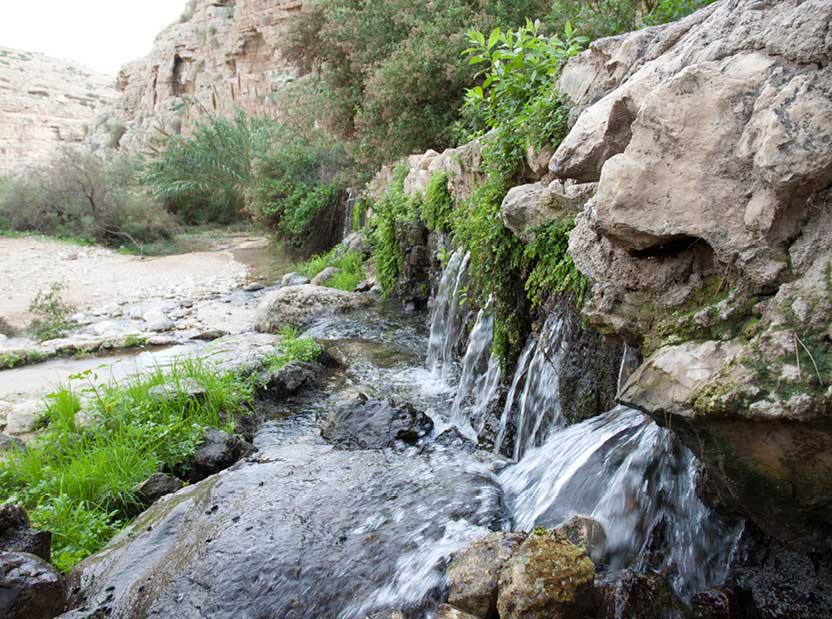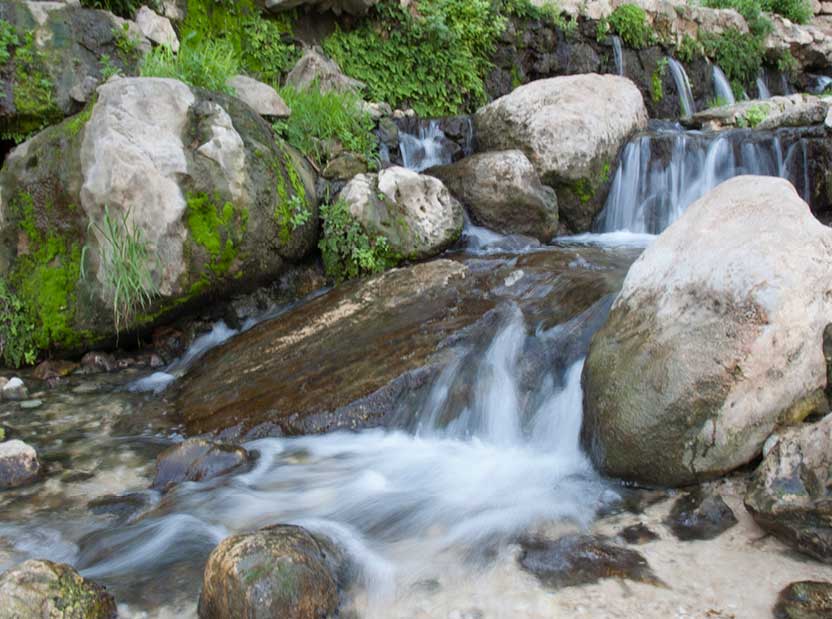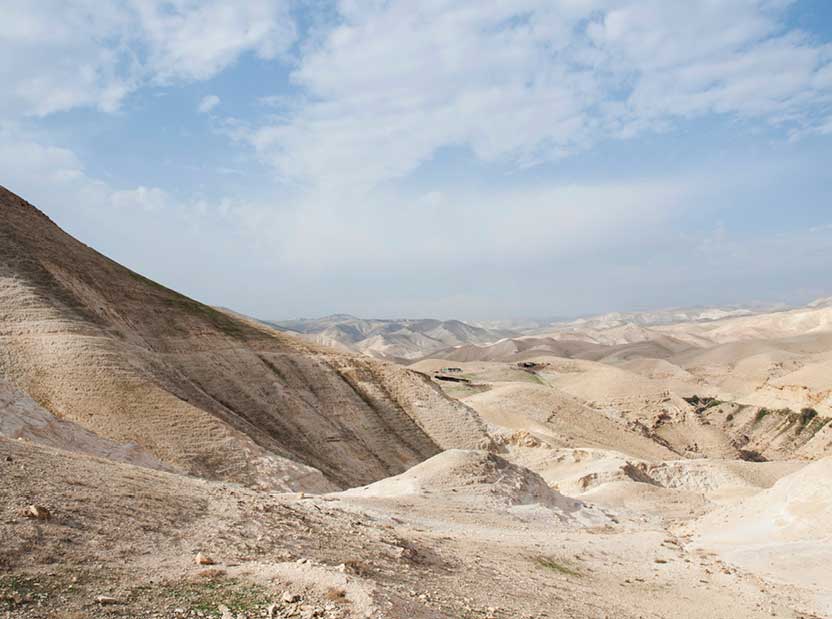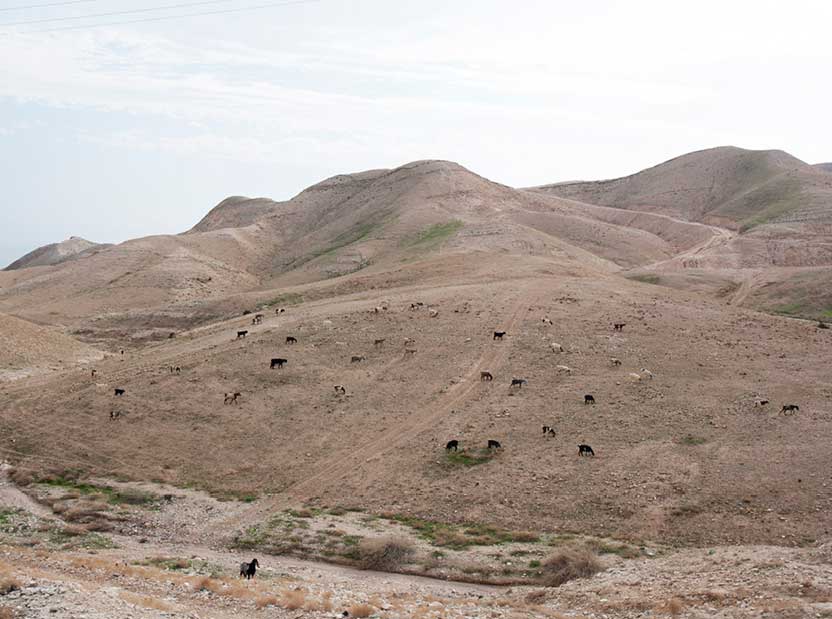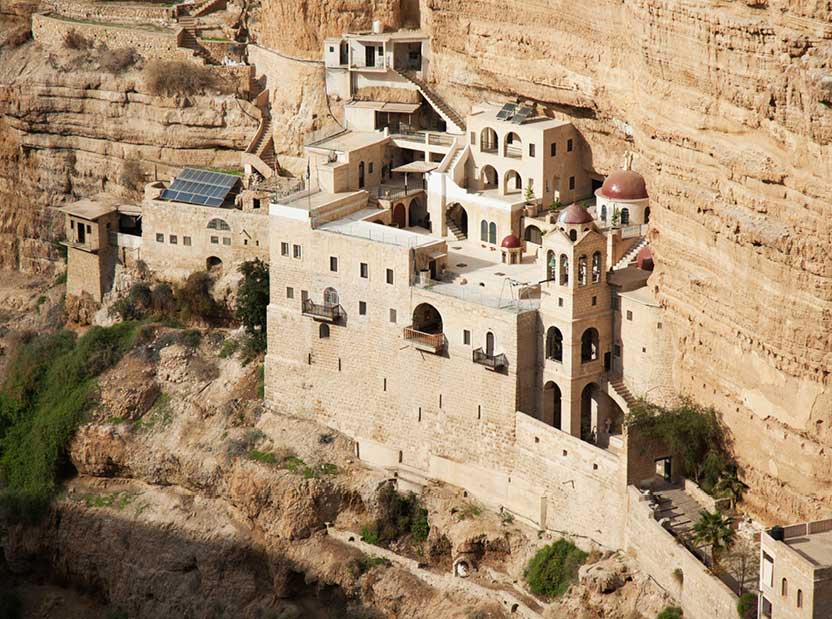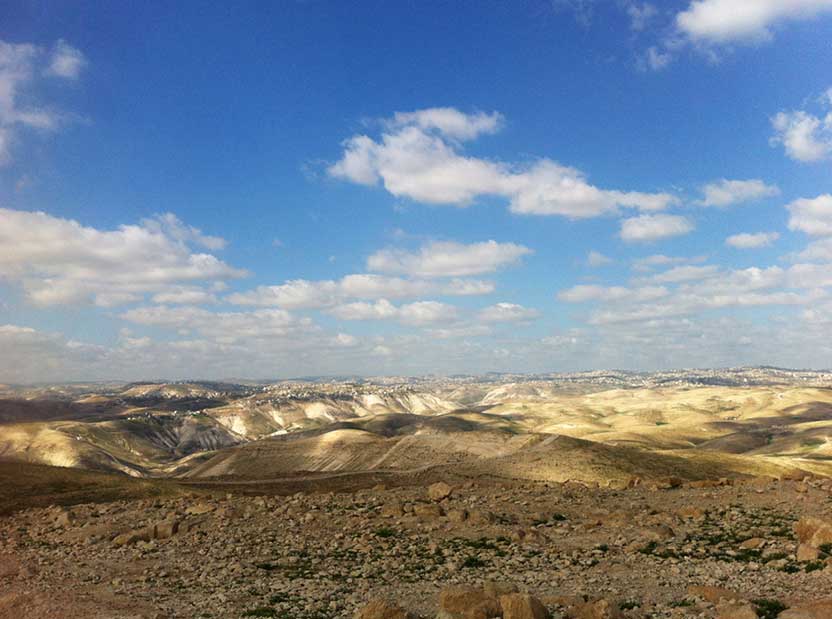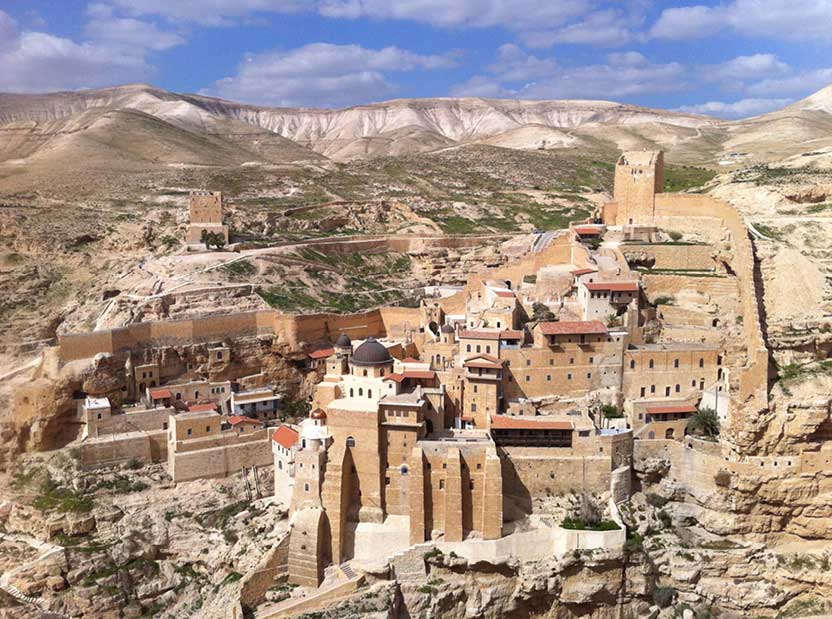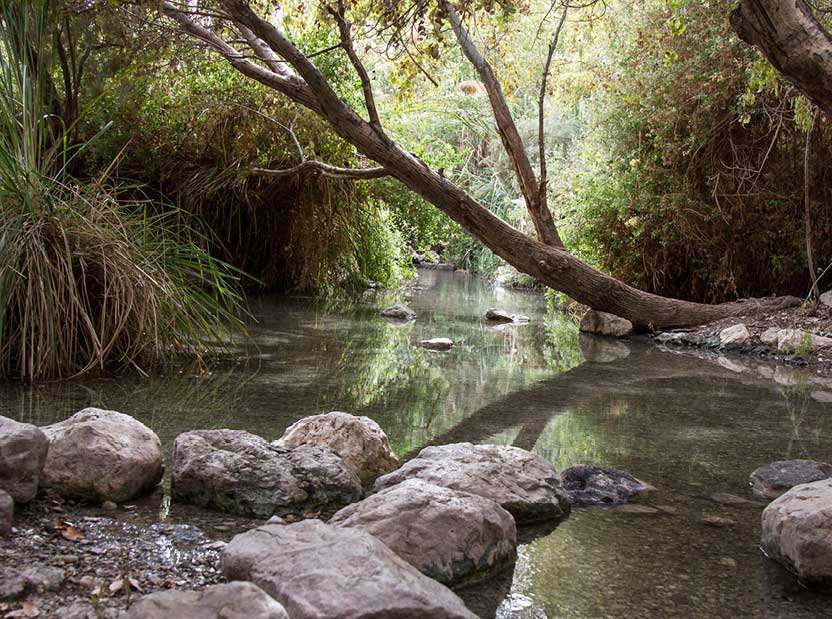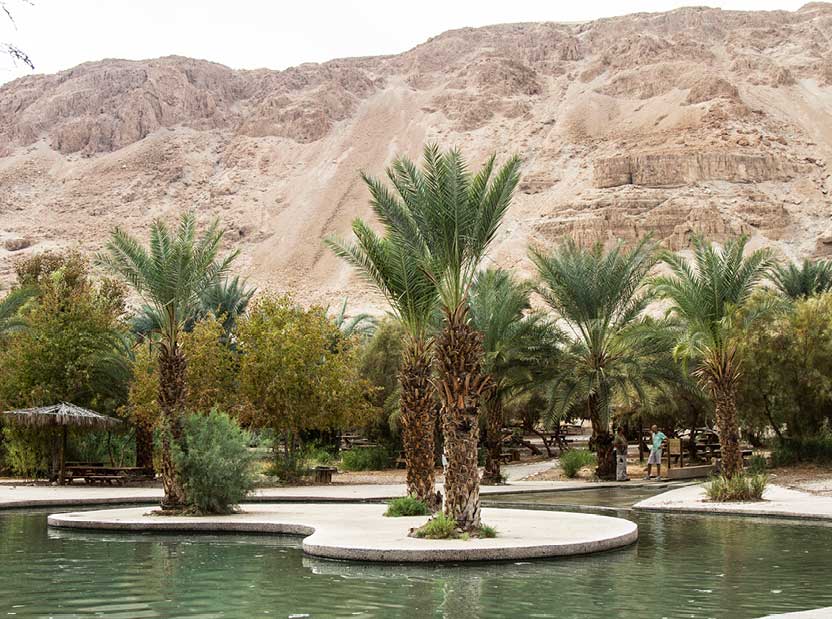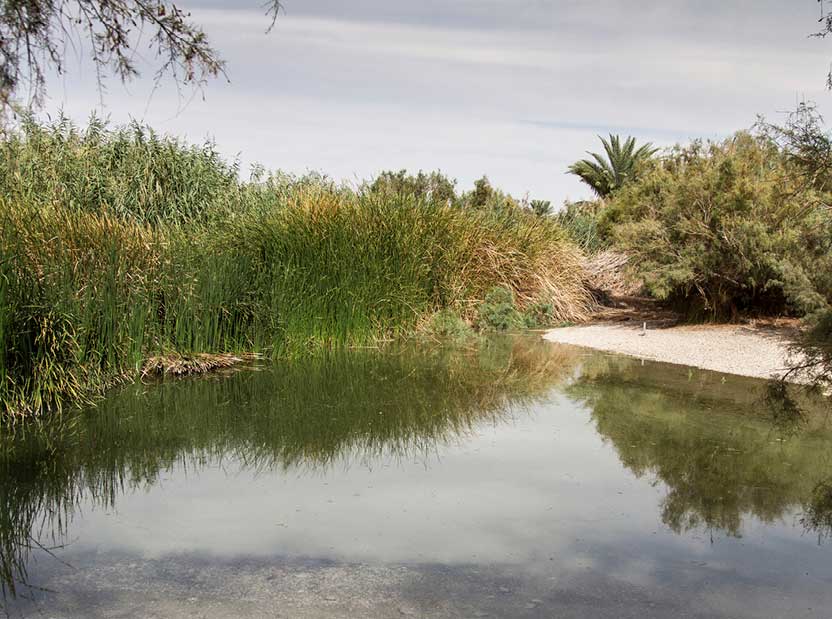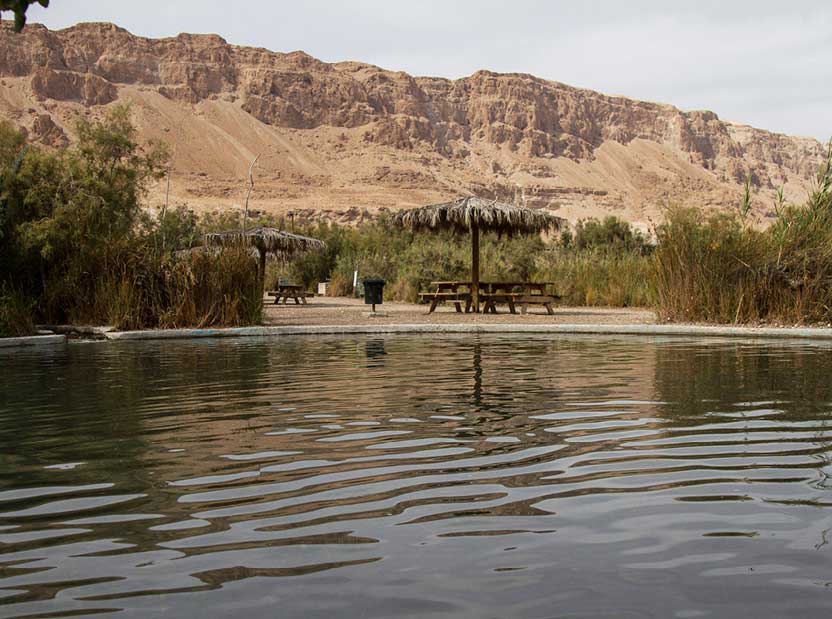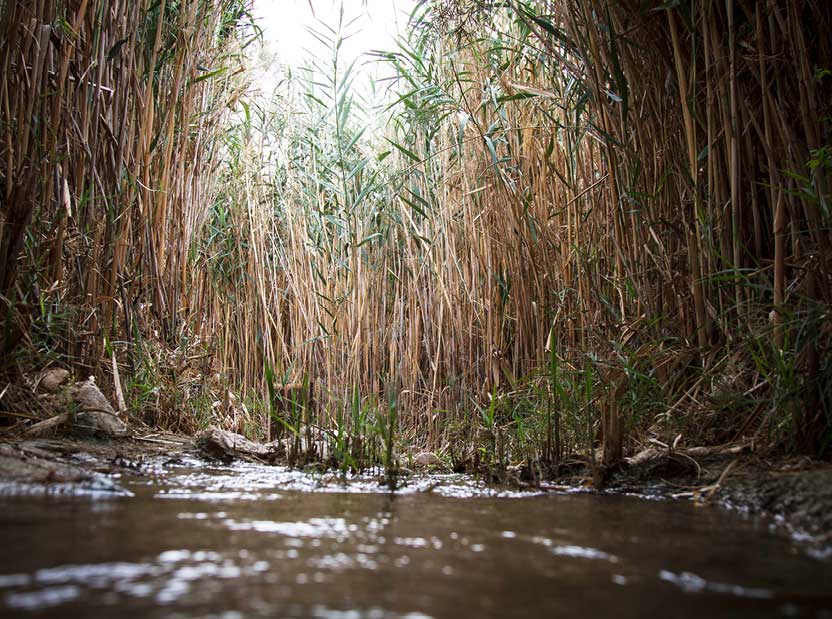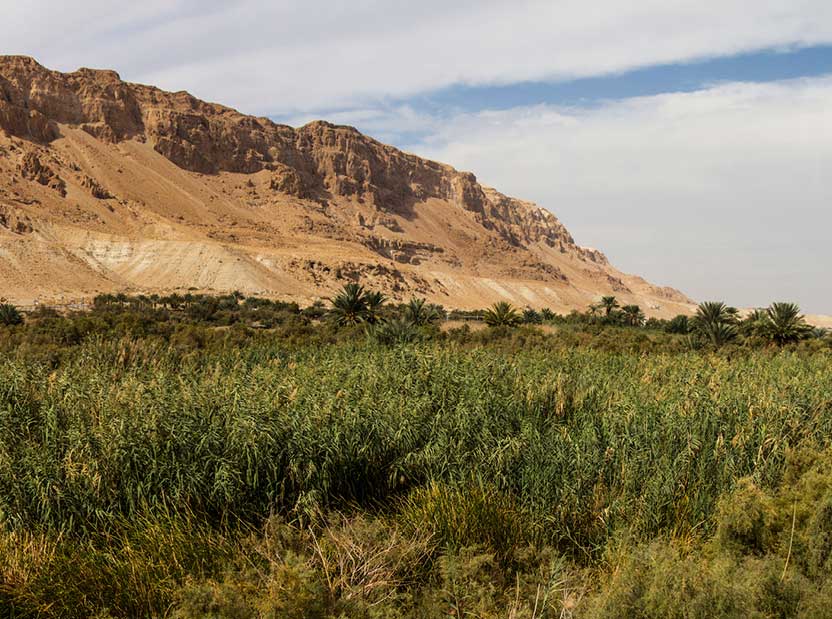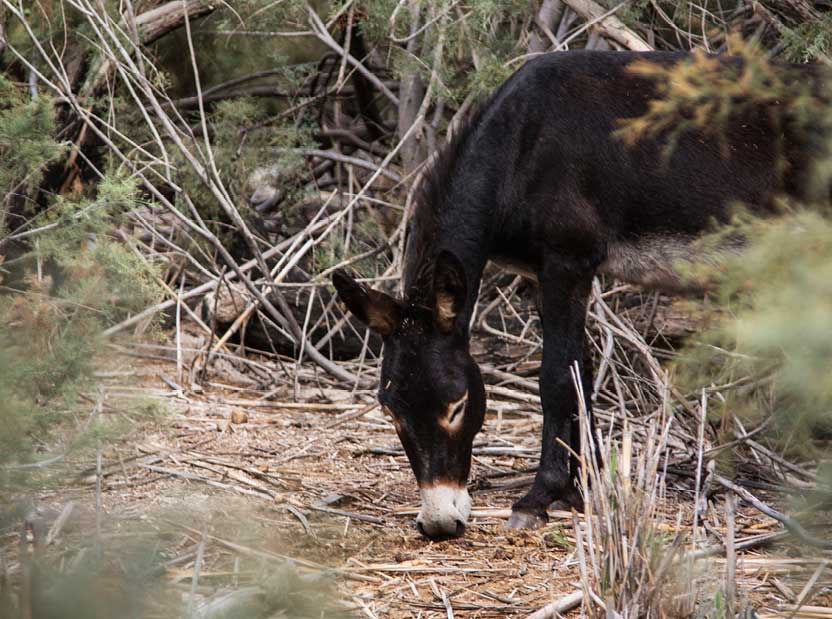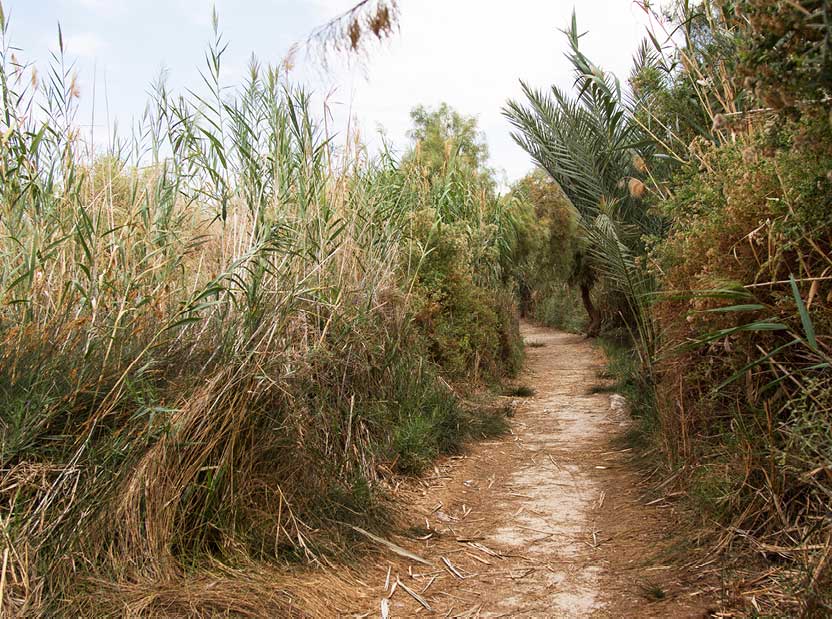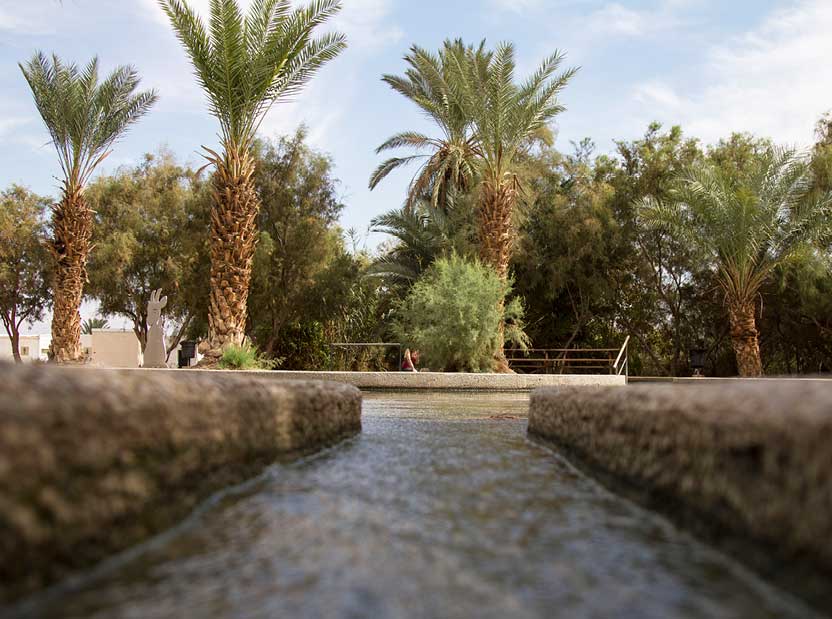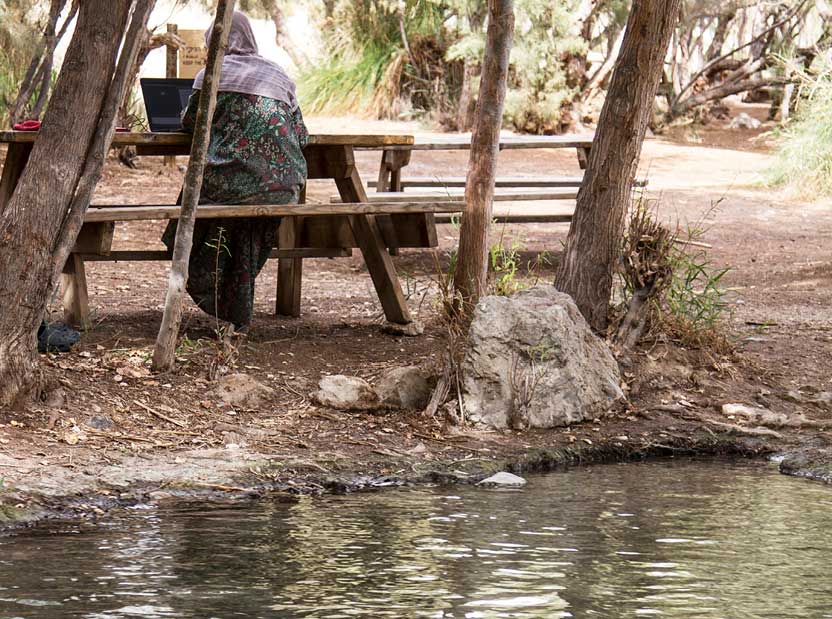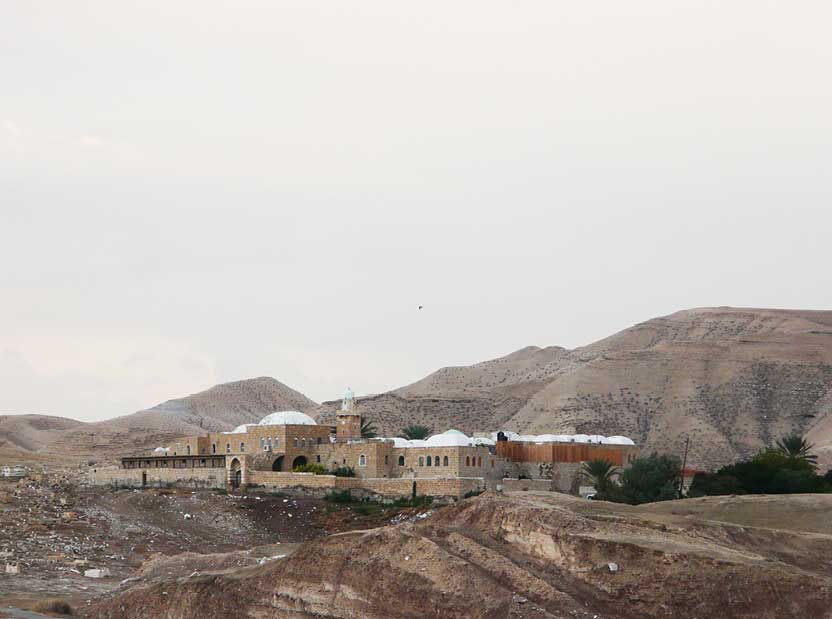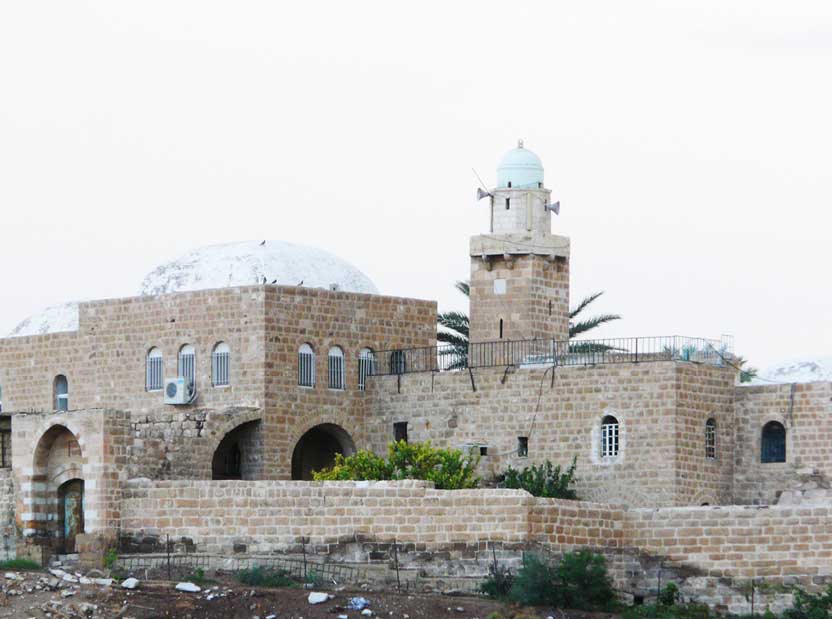Much smaller than the Negev desert in Israel’s south, the Judean Desert punches above its weight in terms of beauty, history, and religious significance. Its mountains, cliffs and chalk hills offer breathtaking views of the Dead Sea and the mountains beyond. Within the desert, ancient rivers have deep carved canyons where natural springs give water throughout the year. Exotic wildlife share the region with the hermits and monks who have found solace in the Judean Desert for centuries.

Judean Desert
Wildlife and truth seekers amid rugged terrain,
natural springs and age-old monasteries.
WADI KELT
Wadi Kelt, also called Nahal Prat, is the longest riverbed in the Judean Desert, running from the outskirts of Jerusalem, through the desert, through the city of Jericho, and into the Jordan River. Along the way, it hosts four natural springs (Ein Prat, Ein Al-Gazal, Ein Maboa / Ein Fawar and Ein Kelt) and two monasteries (Saint George and Chariton). The Ein Prat Nature Reserve is a protected area where visitors can walk along the vibrant stream, visit beautiful natural springs, and take in magnificent views of the monasteries built into the canyon walls.
read more
1. Ein Prat Nature Reserve
Featuring a flowing stream and four natural oases, the Ein Prat Nature Reserve offers visitors a perfect way to spend an afternoon soaking in the majestic vistas of the Judean Desert.
The valley is fed by rainwater and several natural springs.
Ein Prat (also known as Ein Fara) is the westernmost of the springs in Wadi Kelt. “Wadi” is the Arabic word for a small valley or canyon. For centuries, Wadi Kelt’s stream, Nahal Prat, dug into the limestone of the wadi and created a small cliff that eventually exposed a spring called Ein Prat. The spring’s flow stays constant most of the year, with an average daily flow of about 1,500 cubic meters.
Ein Maboa, (also known as Ein Fawwar), is the middle spring of the Wadi Kelt riverbed, and one of the most unique in all of Israel. It completely empties itself of water and refills itself throughout the day, every single day. The spring is fed by rainwater in the Judean Hills that seeps underground and finds its way through the limestone to a karstic cave behind the spring. When the cave fills up with water, it flows into a pool for about twenty minutes. The water in the pool then empties out back into the ground, and the process repeats itself.
Ein Kelt is the easternmost spring in Wadi Kelt. One of its most stunning features today are the remains of the aqueduct that King Herod built in the first century BC to carry water from Ein Kelt to his winter palace in Jericho.
For more detailed information, visit the Israel National Parks Authority website here.
2. Chariton Monastery (Faran Monastery)
The Chariton Monastery is a beautiful Russian monastery located within the Ein Prat Nature Reserve, on the southern bank of the riverbed above Ein Prat. The original structure was founded by the hermit-monk Saint Chariton in the fourth century AD. Saint Chariton dedicated the monastery to Makarius, the Byzantine bishop of Jerusalem at the time, but the monastery came to be known by the name of its founder.
The heart of the monastery is St. Chariton’s tomb. According to the tradition, Chariton built the monastery at that very location because it was there he was imprisoned and miraculously saved from a group of highway robbers. Chariton was tied up and alone in the cave when a viper snake entered. Rather than bite the monk, it spit its venom into one of the bandits’ bottles of wine. When the bandits came back to the cave, they drank the wine, died, and Chariton was saved.
The monastery was destroyed during the Sasanian invasion of 614 AD, and reconstructed over a thousand years later by the Russian Orthodox church. The new structure is built on the remains of the Byzantine monastery, and many of the rooms and chapels are built around caves where the first monks lived.
The monastery has been a popular pilgrimage site for generations. It is surrounded by orchards, water cisterns and agricultural terraces, as well as the remains of a hostel and other structures that served the pilgrims who came to pay their respects.
Entrance to the monastery is permitted. Visitors should take care to dress modestly.
MONASTERY OF SAINT GEORGE
The dramatic Monastery of Saint George (also known as St. George of Koziba), built into the cliffs of Wadi Kelt, is inhabited by Greek Orthodox monks. The monastery began in the fifth century AD as a lavra – a community of hermit monks living in caves around the place traditionally known as where the prophet Elijah was fed by ravens. The monastery itself was built late in the fifth century AD by John of Thebes, and named for the most renowned monk living there at the time, Gorgias of Coziba.
Read more
Like most of the monasteries in the area, the St. George Monastery was destroyed by the invading Sasanian armies in 614 AD. The bones and skulls of the fourteen monks massacred by the Sasanians can still be seen in the chapel.
The Crusaders attempted to restore the monastery, but it fell into disuse after their expulsion from the Holy Land. In 1878 a Greek monk named Kalinikos arrived at the monastery and spent twenty three years restoring it to its former stature.
The monastery is open to pilgrims and visitors, and can be reached by a pedestrian bridge that stretches across Wadi Kelt. A road from Mizpe-Jericho leads to the cliffs above the monastery and to a magnificent lookout.
MAR SABA MONASTERY
One of the world’s oldest inhabited monasteries, Mar Saba (Saint Saba) was founded in 483 AD by monks who sought to emulate the prophets, Jesus and John the Baptist by seeking solitude in the Judean Desert. Sometimes referred to as the Convent or Monastery of Saint Sabba, the Greek Orthodox monastery holds the relics of its founder, St. Sabbas the Sanctified (Sabbas of Mutalaska, Cappadocia).
Read more
In the early seventh century AD, Mar Saba was home to St. John of Damascus, who is known for his key role in the Iconoclastic Controversy (Byzantine Emperor Leo III’s prohibition of the veneration of icons). St. John’s tomb lies in a cave underneath the monastery.
The monastery also played a very important role in the development of the Orthodox Church’s liturgy. Saint Sabas’ monastic Typicon as practiced in Mar Saba became the standard practice throughout the Eastern Orthodox Church and Easter Catholic Churches following the Byzantine rites.
The monastery, which still maintains its ancient traditions, is open to pilgrims and visitors. In keeping with ancient tradition, however, women are restricted from entering the main compound and can only visit the Women’s Tower near the main entrance.
EINOT TZUKIM (EIN FASHKA)
Einot Tzukim (also called Ein Fashka) is one of the most beautiful and well-protected nature reserves in Israel. It is also the country’s largest desert oasis. Named for the springs that sustain it, Einot Tzukim is comprised of three areas: the northern “Closed Reserve,” the central “Visitors’ Reserve,” and the southern “Hidden Reserve.”
Read more
Visitors’ Reserve
The central area of Einot Tzukim, about 500 dunams (125 acres) big, features wading and swimming pools filled with natural spring water. Visitors can walk along shaded trails to access the pools and enjoy picnics surrounded by plants and trees that thrive in the oasis. The Visitors’ Reserve also features a Second Temple period archeological site featuring a manor house, irrigation pool, garden and unique installation that some archeologists believe housed a production facility for balsam perfume.
Hidden Reserve
Nearly three times the size of the visitors’ reserve, the southern reserve can only be visited through a guided tour organized in advance with the parks authority. This policy keeps the park pristine and offers visitors the opportunity to see a natural desert oasis in a uniquely wild condition.
Closed Reserve
The largest area in Einot Tzukim is the northern reserve. Completely closed to visitors, these 675 acres are left for nature to flourish undisturbed and can only be accessed by scientists specially invited by the parks authority.
NABI MUSA
Maqam al-Nabi Musa is the traditional Muslim pilgrimage site of the Tomb of the Prophet Moses. It has been the site of annual pilgrimage since the time of Saladin (the twelfth century AD). The tomb is just off the main road from Jerusalem to Jericho, along the Mediterranean Arabs’s route of the Haj – the pilgrimage to Mecca.
Read more
Nabi Musa, one day’s march from the direction of Jerusalem, is also an excellent vista point for Mount Nebo – where the Old Testament suggests that Moses was buried. According to Muslim tradition, Saladin received a revelation in a dream that the Moses’ true tomb was located across from Mount Nebo, at the present site of Nabi Musa. Saladin built a cenotaph and mosque to commemorate the location.
In 1269, Malmuk Sultan Baibars al-Bunduqdari built a small shrine on the site and began a tradition of a week-long festival of pilgrimage to the site. A hospice for pilgrims and minaret were built in the fifteenth and sixteenth centuries. The hospice has been expanded several time over the centuries to accommodate the growing numbers of pilgrims.
After several centuries of neglect, the buildings were restored by the Ottomans in 1820 and the weeklong pilgrimage from the Al-Aqsa mosque in Jerusalem was reinstituted.
The tomb (maqam) is a large one-story building with a courtyard in the middle, surrounded by rooms topped with a complex of domes. The mosque on the western side of the courtyard is separated into two areas – one for men and one for women. A small door inside the mosque leads to a hallowed room that contains the actual tomb.
The minaret (tower) outside the mosque provides incredible views of the shrine, Mount Nebo and the surrounding desert hills, and the Jordan Valley to the north. A double-domed structure 2 km down the road from Nabi Musa marks the tomb of Moses’ shepherd, Hasan Al-Rai, and the shrine is surrounded by a cemetery for Muslims, some of whom died during the festivals.




